How I use Day One — and an aside about the differences between Bear and Day One
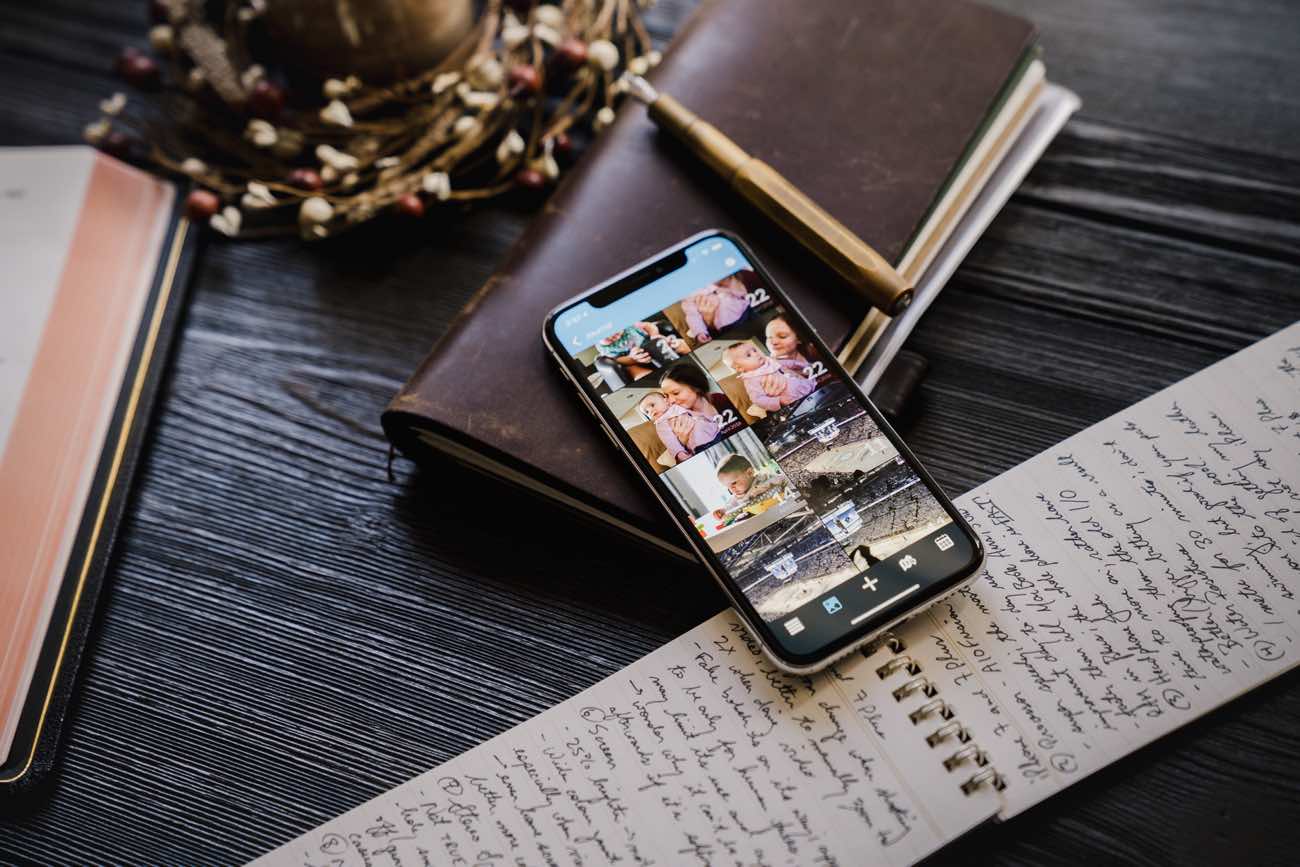
I just looked back in my Day One to find out when I started using Day One. The answer:
Date: March 11, 2011 at 12:18:08 AM CST
Finally, I took a look at this new program that I am doing my first post on. Day One for Mac is a BRAND NEW app that was released today. It’s very simple, which I have fallen in love with, and allows iPhone integration as well. It was only $10 so I figured I’d give her a shot and I’m very, very happy so far. I also spent the $1 on the app for my iPhone so that if I don’t have my computer around I can still use my phone to do a quick entry. MacJournal for my iPad is now relegated to being my blogging app, which is still quite useful to me. A very expensive blogging app at that, but I will survive.
Being a proficient journaler isn’t necessarily one of my strong suits, as I’ve gone through monthly streaks of daily journaling and I’ve gone weeks on end without journaling at all.
Fortunately, Day One has grown and has been improved upon from that very first entry1 and has made many of the tedious aspects of journaling an automated breeze. I use Day One’s Activity Feed for experiencing the moment and going back later to insert important events or happenings during the day.
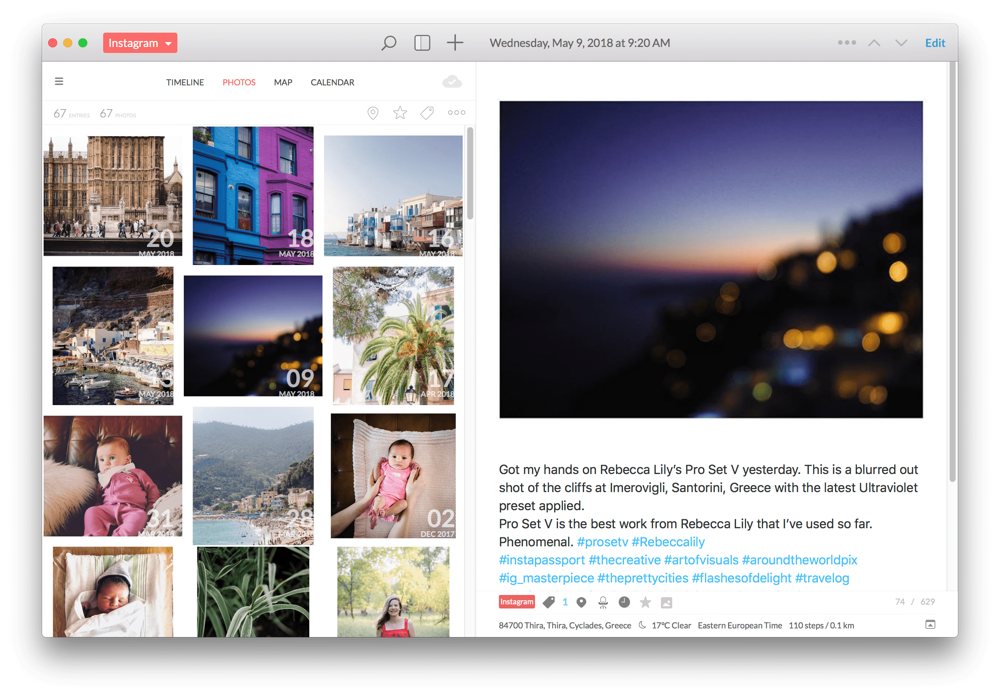
Activity Feed also picks up my activity on Twitter and Instagram, so anything worth saving2 is put into its own tag (in the case of tweets) or its own journal (in the case of my Instagram posts).
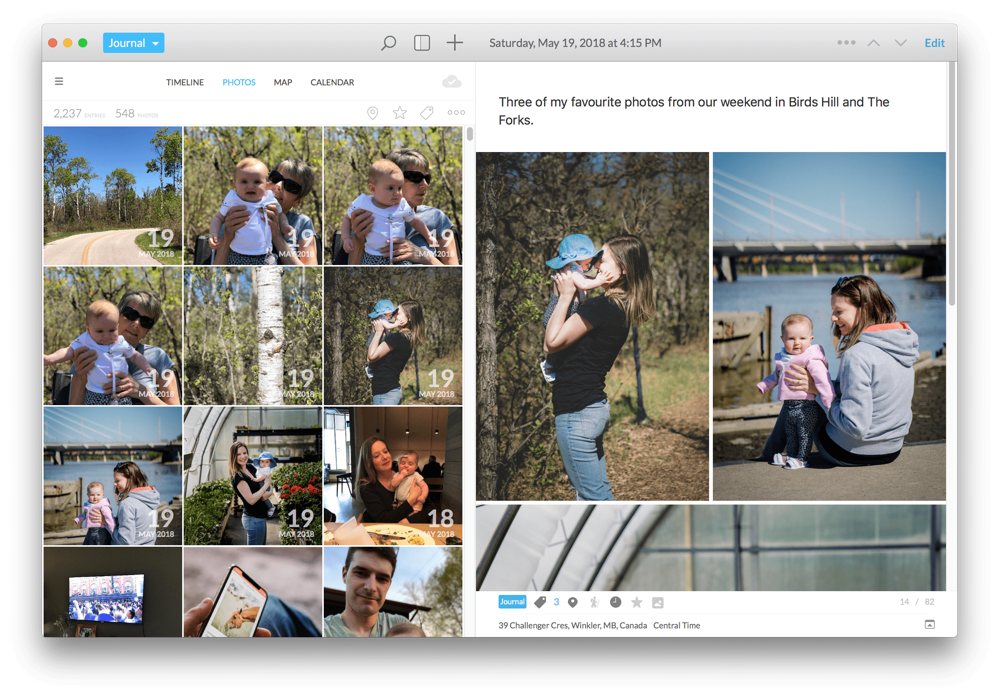
Of course, like any new father, so many of my journal entries have a photo attached. With every new coo and every new rollover, I find myself creating more journal entries than ever before. Day One’s implementation of photo journal entries has always been perfect for capturing those big moments. And when the Day One team launches video support for journal entries, you can bet those entry types will flood my journal.
As a whole though, there’s very little that makes my Day One workflow different from anyone else. I’ve been at it for a long time, so my Day One history has really started to show its value. Other than that, my Day One-specific workflow is fairly hum drum.
I think the more interesting workflow is how Day One is part of my broader, information- and research-based workflow.
Wait! There’s more….
How to Use Day One in Your Life
For a the best journaling app, you won’t do better than Day One. And if you want to discover how to use this app more regularly, and take full advantage of all its features, then we have some video screencasts that can help you.
In our course, Day One in Depth, you get 8 video screencasts that will take you line by line through every feature, setting, preference, and option found in Day One.
We’ll show you…
- Complete walkthrough of the Mac and iOS apps.
- How to create and customize your journal entries (from text, to photo, to audio)
- How to find, filter, export, and more.
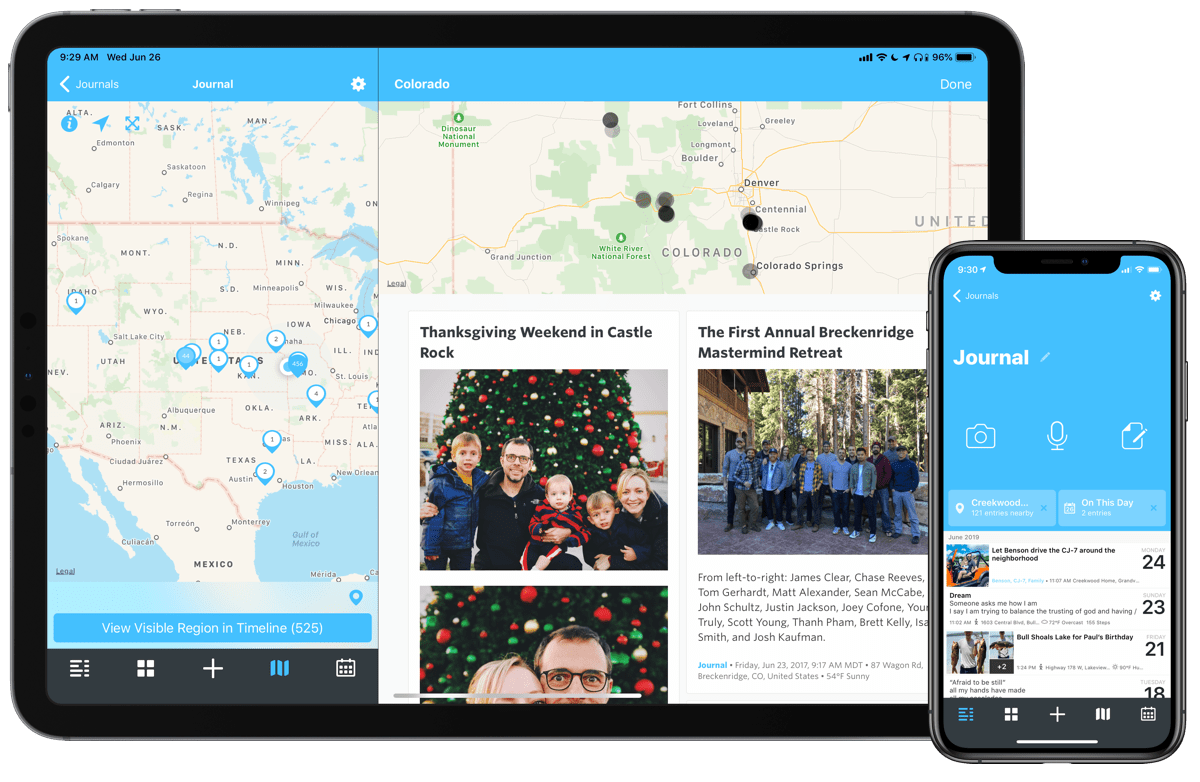
Plus! You will get bonus tips, workflows, and tutorials for how best to use Day One to suit your own needs: from a morning writing time to a photographic travel log, to weekly reviews and productivity journaling — Day One can do it all and we will show you how.
The WORKFLOW (in big capital letters)
The wide world of information is so large and so vast that it is impossible to stay on top of everything you absorb without some sort of system. When a link comes through one of my social network feeds, or an interesting email hits my inbox, or a stunning photograph pops up on Instagram, I generally like to have a plan of attack on how I’m going to consume and deal with the things that catch my attention.
I don’t adhere perfectly to this workflow in daily life, as things often slip through the cracks — sometimes I skip a step entirely — but I find, when I work through the Workflow, less information is missed and more information is made available for later.
Here’s my step-by-step process:
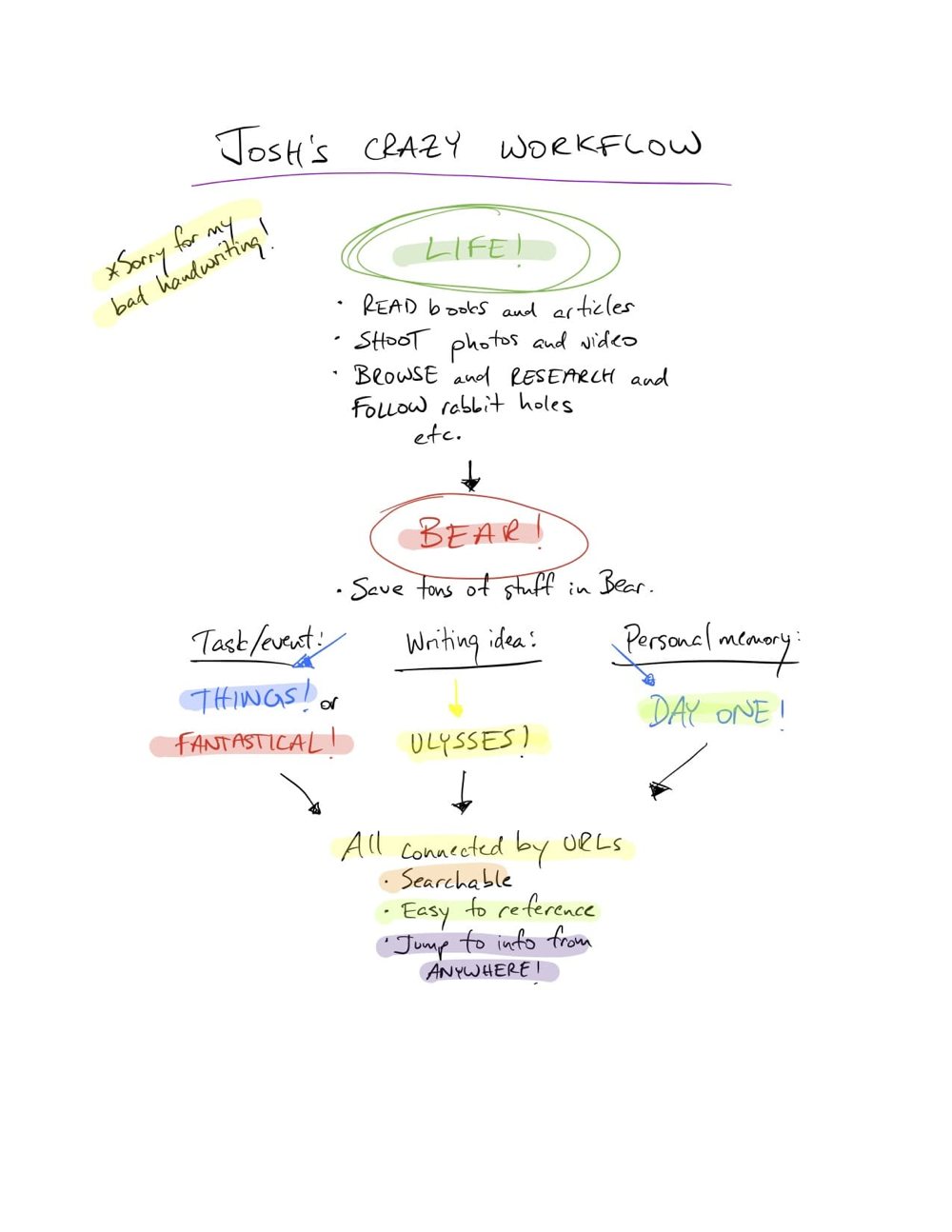
1. Life
I think living life is the most important first step to anything. Shoot photos. Read great articles and great books. Drink great wine and great coffee. Try new foods. Hug my wife and daughter. Go for a round of golf.
Whatever tickles my fancy for that day, I’m much happier when I participate in life and use my device to record things later.
2. Save it for later
When it comes to information (URLs, books, quotes, photos, Pinterest ideas, the latest stock quotes, a handy financial tip), it’s always best to have a way to jot down the idea to reference later. Sometimes I do this inside a Field Notes book (although this is largely a dying workflow), but usually I save:
- Articles in Instapaper
- Photos in Camera Roll
- Quotes in Instapaper or Bear
- Great home ideas in Pinterest
- Interesting screenshots in Bear
- Tasks and events often come through email, so my email inbox is a bit of a repository as well.
It’s not always this simple, but saving any interesting informational tidbits in one of these areas keeps things clean and organized. As long as this “stuff” ends up in Bear, I won’t miss it.
3. Bear Notes
Bear is an absolutely awesome note-taking app, and one I’ve fully adopted in the last six months or so. I’m not sure why I didn’t adopt Bear when we named it the best note-taking app for iPhone and iPad — it’s simply too good to not have installed on an iPhone or iPad.
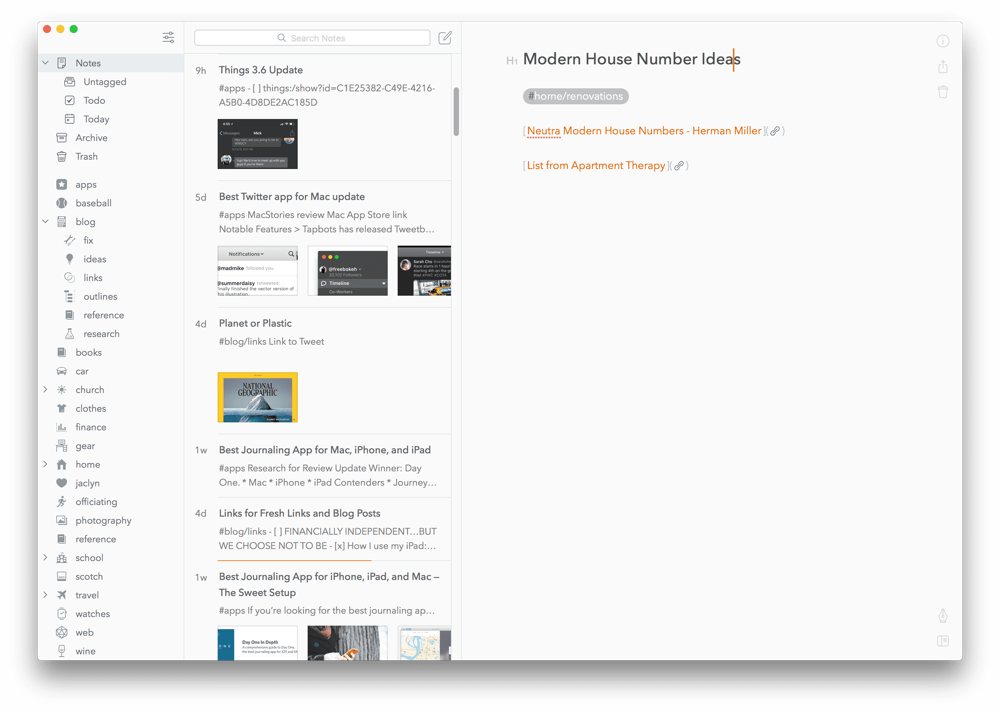
Bear is great at being a giant scrapbook of useful (and useless!) thoughts and ideas. I throw anything and everything into Bear and use Bear to house all sorts of information and data to search and use at a later time. I keep all my notes tagged with a general topic (like “finance” or “home/renovations”) to keep things organized and easy to find. And I generally jump into Bear four or five times a day to keep my notes organized.
Once anything gets into Bear — like a URL to an article I enjoyed reading in Instapaper, or a screenshot of an interesting home renovation idea I found on Instagram or Pinterest — it has four options:
- If the note is a task or event, it gets sent to Things or Fantastical. If there is anything important I need to save for that task or event (like a PDF or a link to a website I need to reference), I use Bear’s URL scheme to paste a URL directly to the Bear note right in the Things task note or the Fantastical event note.
- If the note is an idea I want to pursue for my personal blog or for The Sweet Setup, I send the idea from Bear to Ulysses. Just like with Things/Fantastical, I paste the URL of the Bear note in the Ulysses sheet attachment window so I can quickly reference any information in Bear if necessary.
- If the note is a personal memory or something I want to speak about to my future self, I send the note to Day One. Once again, I paste a URL to the Bear note in my Day One entry (and quite often, I’ll paste a URL to the Day One entry in the Bear note) in case I want to reference any information in Bear in the future.
- If the note doesn’t fit into any of the above categories, it’s left in Bear and sits there for future reference.
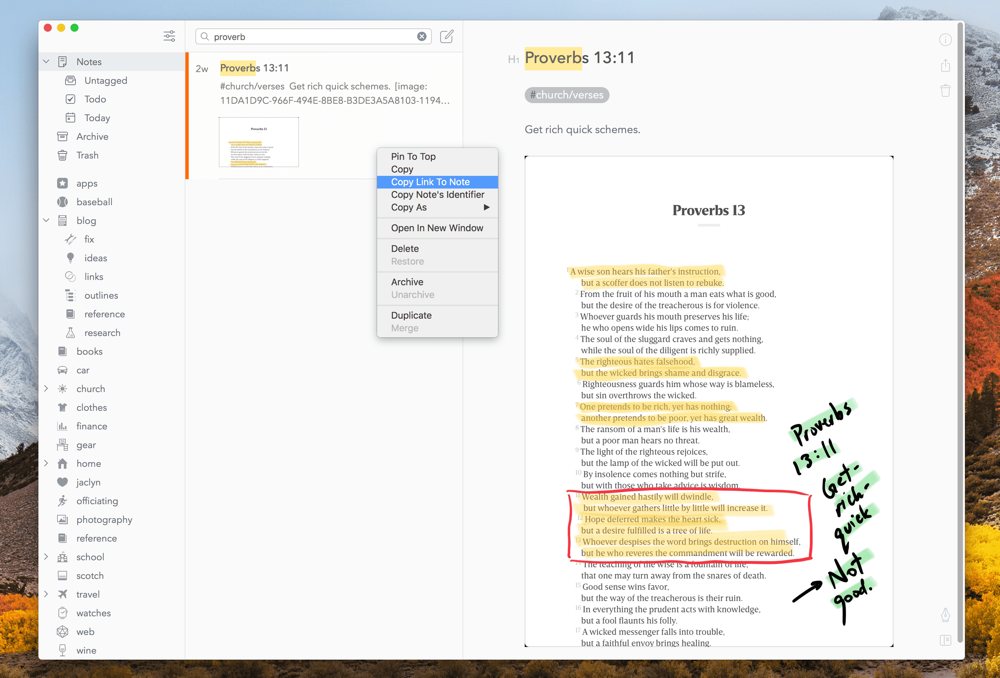
I try my best to paste a URL directly to the Bear note wherever I send the note’s contents:
- Bear note URL into a Things task notes or a Fantastical event notes
- Bear note URL into a Ulysses sheet attachment
- Bear note URL into a Day One journal entry
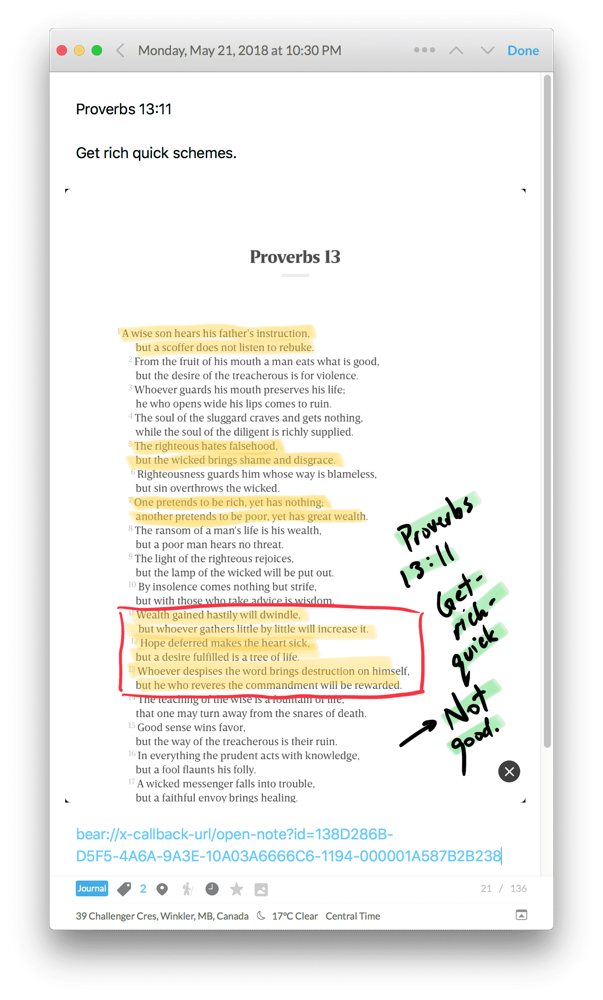
When I adhere to this workflow, it ensures a few things:
- Everything I read — or rather, everything I read that I find interesting — is documented and the URL and my corresponding thoughts can be referenced in Bear in the future.
- Everything is connected and instantly referenceable, so long as I put the URL directly into the task/event/sheet/journal entry in each of their respective apps. The workflow is doubly impressive when you paste the task/sheet/journal entry URL back into the Bear note, allowing you to jump all over macOS or iOS without skipping a beat.
- Everything is searchable and is available to be referenced in an email, in a blog post, in an app review, in a text message, and so on.
As I mentioned, I don’t adhere to this perfectly — photos stored in Camera Roll don’t get put into Bear only to be saved in Day One. Generally, I just share important photos directly into Day One using the share sheet. Screenshots, however, often get added to Bear along with a little annotation to highlight what part of the screenshot I found interesting.
Why Bear and Not Ulysses or Day One?
Right around the time The Sweet Setup launched the Learn Ulysses course, Shawn posted his Ulysses setup and outlined how he kept all his research, notes, quotes, ideas, and inspiration inside Ulysses alongside all his actual writing.
Much the same could be said about Day One. Day One has staying power — its popularity in the App Store inspires confidence regarding its long-term development — and many of its organizational features (like tags and multiple journals) give it the capabilities necessary to organize and reference boat-loads of research. For those who want to keep everything in one place, it might make a lot of sense to house everything inside an app like Day One.
The reason I use Bear is pretty simple: I prefer the way it handles attached files. You can drop a Pages/Word document or a .txt document into a Bear note and click the link to reference the attached file — Day One doesn’t have this feature. Ulysses can handle files like this in the attachment bar, but I prefer Bear’s scrapbook-style to Ulysses sheet workflow.
I also greatly prefer Bear’s Safari extension for extracting web pages directly into a new note. Day One’s share extension is more for saving and less for extraction, and the same goes for Ulysses.
Day One is My End Game
The result of all this thinking and planning is that Day One is one of my end games — all sorts of stuff is funnelled into Bear, where it’s triaged in the bottleneck and sent somewhere for future use. Anything that involves a personal memory or — more importantly — anything where I want to speak to my future self goes into Day One. It’s this personal conversation I’m having with my future self that defines what moves into Day One and what stays in Bear.
It’s not a perfect science either — journal entries don’t need to start in Bear only to be moved to Day One. Anytime I feel like talking to 40+ year-old Josh, I jump into Day One and hammer out a few thoughts without any worry of breaking the workflow.
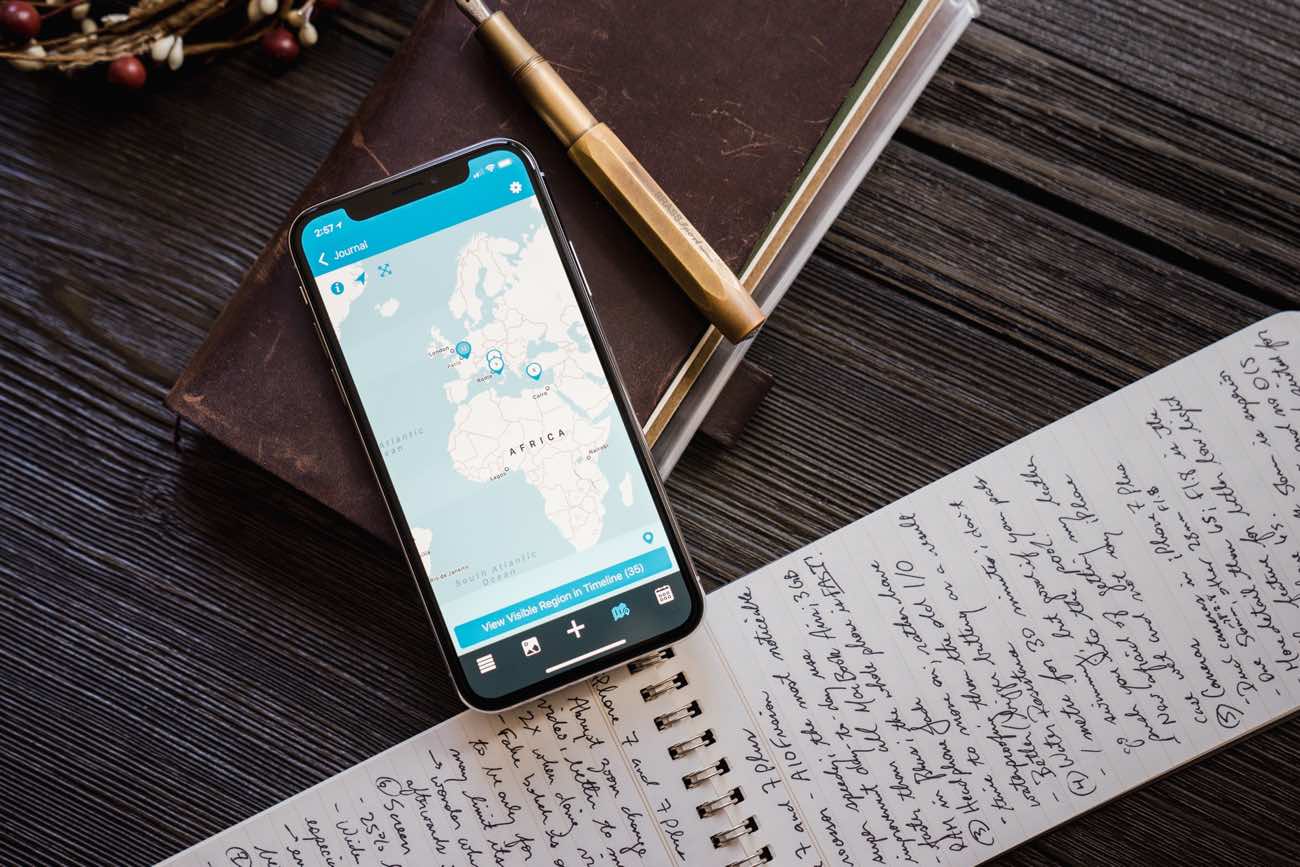
Plus, while Bear’s design is nothing to shake a stick at, Day One’s whimsy and design are worthy of housing all those personal memories and personal conversations. I like having a divide between “all this stuff” and “Josh’s personal memories.” Having that divide keeps me intentional about what I’m saving in my personal Day One and allows me to be less intentional with my snippets and scraps in Bear.
All this works for me to stay on top of interesting data, links, ideas, pictures, charts, and quotes for the future. I don’t think this is the answer for everyone, but I do think the art of being intentional about saving information is going to be a necessity the more the world continues its march toward data and information.
Day One, in my little world, is my little world — a largely information-free area that has sentimental value and that is ripe with personal conversations. Day One is, and has always been, the app that best embodies me. I don’t think I see a day where Day One is not part of my larger data workflow.
Wait! There’s more….
How to Use Day One in Your Life
For a the best journaling app, you won’t do better than Day One. And if you want to discover how to use this app more regularly, and take full advantage of all its features, then we have some video screencasts that can help you.
In our course, Day One in Depth, you get 8 video screencasts that will take you line by line through every feature, setting, preference, and option found in Day One.
We’ll show you…
- Complete walkthrough of the Mac and iOS apps.
- How to create and customize your journal entries (from text, to photo, to audio)
- How to find, filter, export, and more.

Plus! You will get bonus tips, workflows, and tutorials for how best to use Day One to suit your own needs: from a morning writing time to a photographic travel log, to weekly reviews and productivity journaling — Day One can do it all and we will show you how.
-
I actually have a few entries from the old MacJournal for iPad app I was using before Day One debuted. I copied and pasted and changed a bunch of those dates to try to build out my Day One. I don’t think I ever completed the project though. ↩
-
Mainly, I save every one of my Instagram posts so I have a running journal of my photography journey. ↩
